At the risk of stating the obvious: Indonesia is huge.
But did you know it’s actually bigger than Thailand, Laos, Vietnam, Cambodia, Malaysia and The Philippines combined?
Or that it’s wider than the entire United States?
When I see Indonesia covered as just another chapter in a region guide for Southeast Asia, it always seems funny to me, since Indonesia could easily justify a whole guide on its own.
Considering its size, it seems cruel that the default visa for Indonesia is just 30 days, making it a challenge to travel far and wide even with significant time available. It certainly helps to narrow things down to one or two islands.
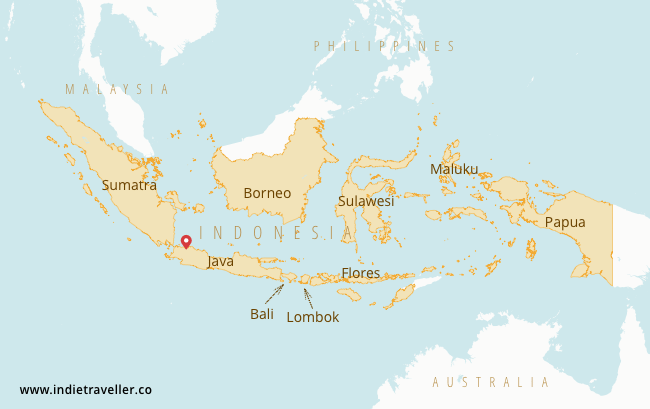
Some travelers only go to Bali, Indonesia’s famed resort island. Bali at its best can be enchanting, especially if you go inland, but it’s also quite overtouristed in the south. Destinations such as Lombok, Java, or Sumatra will let you escape the crowds more easily.
If you’re wondering just which part(s) of Indonesia to tackle, then read on.
Plan your Indonesia trip
Java
Java is Indonesia’s main island and home of its capital city, Jakarta. Some backpackers start in Jakarta, but this is usually only out of practical necessity. Many travelers complain that the capital is just too big, infuriatingly congested, and lacking in tourist interest.
This means the unofficial starting point of the Java backpacker trail is really the smaller and soulful city of Yogyakarta. From there, you can see a ton of amazing sights as you go further east.
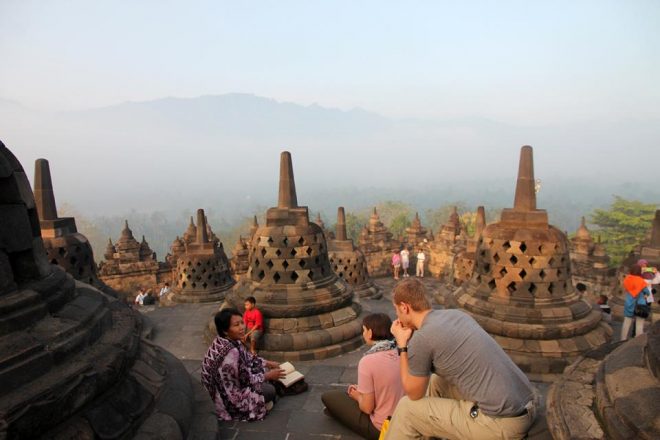
Everything in Java just seems to be big. Big volcanoes, big temple complexes, big everything.
Most famously, it’s home to Borobodur, the largest Buddhist temple in the world. The nearby city of Yogjakarta is a great cultural hub and a good base from which to visit Borobudur as well as other temples like Prambanan.
As you go further east on Java, you’ll find some incredible volcanos. The still-active Mt. Bromo is a spectacular sight, especially at sunrise. Then there’s the blue-flame spewing Ijen volcano, where you can go right into its sulphur-spewing crater. Both are usually reached by either a short walk or a 4×4 ride, not by hiking. If you want more of a mountain hiking experience, consider climbing Mount Rinjani on Lombok.
Because the locations are quite remote and difficult to reach independently, I opted for a 4-day tour starting in Yogyakarta that included Bromo and Ijen.
One thing to know about Java is that key sights such as Borobodur do tend to be crowded with domestic tourists, including often large groups of school children who may shower you with attention. They’ll want to take pictures or to practice English with you, which is pretty fun at first, but can also get annoying after a while. But so long as you don’t expect some kind of spiritual solitude at Borobodur, you’ll no doubt love seeing this epic monument.
The epic Sewu Waterfall was recently put on the map, so to speak, by several travel vloggers. It takes a little trek to get there and is still relatively little-known.
At the very eastern tail of Java you’ll find the oft-overlooked Banyuwangi region, which is home to mangroves, savannahs and a mysterious hairy forest at De Djawatan. Consider staying in Banyuwangi for a few days if you want to add a dash of off-the-beaten-path experience to the usual Java travel trail.
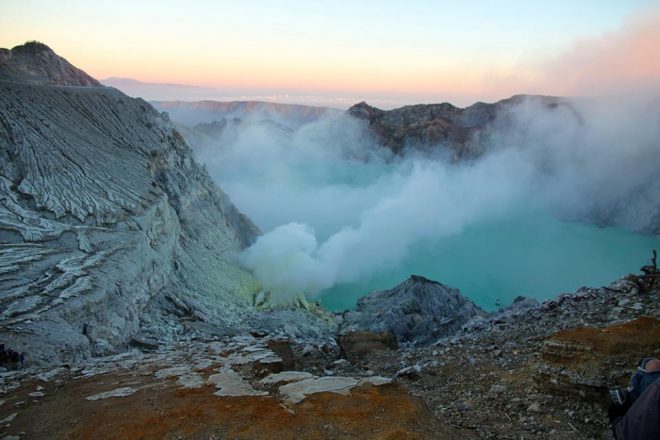
Bali
Bali is by far Indonesia’s biggest tourist destination. The vibe on Bali ranges widely from crass commercialism in Kuta, the main tourist area in the city of Denpasar, to pleasantly low-key further inland.
Kuta is a lot of things. To some Australians, it’s a cheap place to drink yourself silly, like the Ozzie version of Magaluf in Spain. You’ll find Asia backpackers too and some families on a holiday staying in one of the resort hotels. Kuta is a bit of a congested maze of little streets and alleyways… with a mix of hostels, hotels, spas, tacky souvenir shops, scooter rentals, Western brand stores, McDonald’s, Starbucks, a Hard Rock Cafe, and a whole lot more. You might find a nice local Indonesian warung tucked away somewhere, but it’s equally easy to have German schnitzel in a tacky tourist restaurant.
As you can maybe tell, I’m not a big fan of Kuta. I think it’s way too commercial, but there are many travelers who love it.
Besides the Australian binge drinking or fly-and-flop holiday crowd, Bali also attracts a gentler crowd especially around the inland village of Ubud. There are many beautiful temples to visit in and around Ubud, the tourist shops sell genuinely impressive handicrafts and local art, and the surrounding hills are wonderful for an afternoon hike.
Another major traveler hub can be found along the beach in Canggu, popular with Australian surfers and digital nomads from around the world. If you’re curious about the vibe in Ubud versus Canggu, our guide can help you decide where to stay. You can also find some great information here on backpacking in Bali.
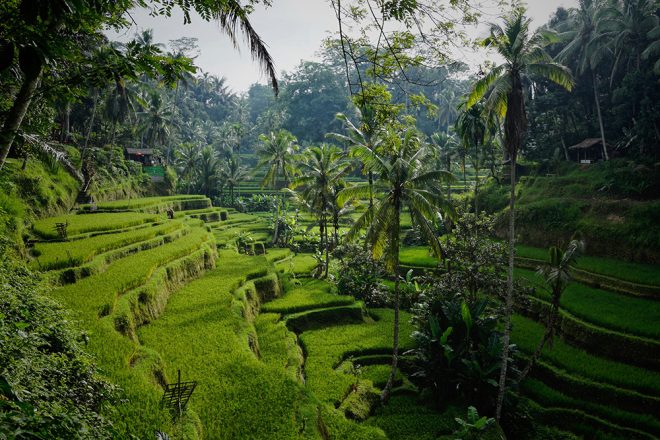
I think Bali truly shines inland. Consider renting a scooter so you can enjoy the wonderful rice terrace landscapes or visit temples at your own pace.
Along the north and northeast coast many of the beaches have dark volcanic pebbles instead of powdery white sand, which means fewer people visit these parts… but that’s precisely what makes them great. Consider visiting the small fishing villages of Lovina and Amed, or take a boat to the small island of Nusa Lembongan. A popular activity in Lovina is to head out on a small boat for some dolphin spotting.
You could also make a side-trip to the island of Nusa Penida, though it’s become a bit of an Instagram hotspot and some argue you could skip Nusa Pendia.
If you’re a scuba diver, I hugely recommend Amed/Talumben. This small town is right next to the wreck of the USAT Liberty, which once stranded relatively close to shore. You can literally walk from your dive shop into the sea, and then slowly descent from the shores right down to the wreck. Since no boat ride is required, dives cost very little. It’s a perfect place for getting your certification as well, and I saw prices cheaper than on Koh Tao, Thailand.
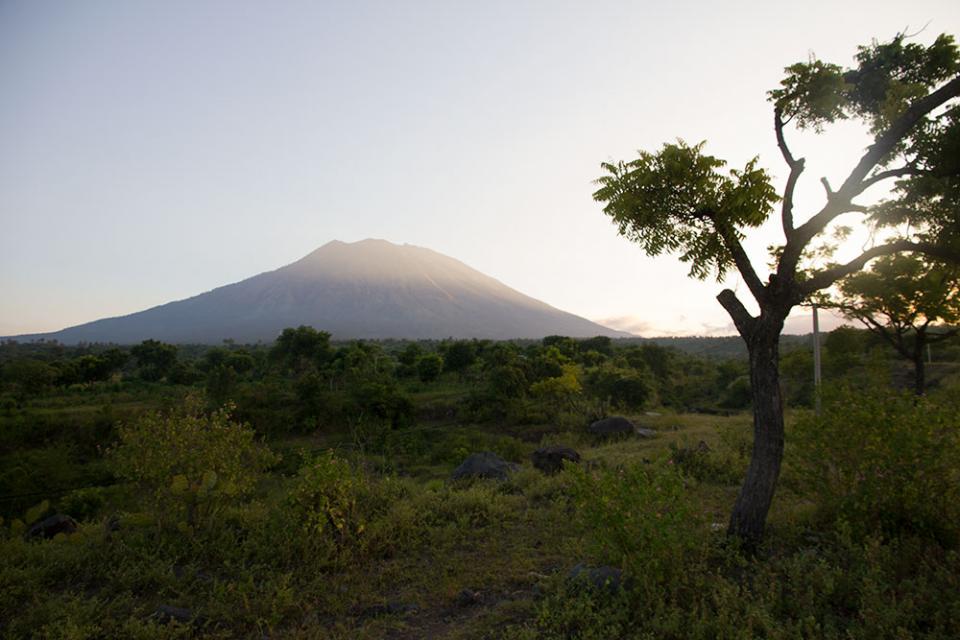
Mt Agung, northern Bali
Lombok
Lombok is right next door to Bali, just a 2,5-hour boat ride away. It might not have all the cute little houses and Hindu shrines that you find on Bali, but what it does have is unspoiled beaches and amazing nature without the crowds. Lombok is a bit less explored, but it’s also a more authentic place to go. You can read more about the sights and things to do on Lombok. If your trip is mainly to Bali, but you still want to experience Lombok, consider this tour taking you to tribe villages, waterfalls, and more.
The main attraction is Mount Rinjani, a volcano that you can hike up to as part of many multi-day trekking tours. The various waterfalls, villages, etc. around the island are also well worth exploring. Kuta on Lombok (not to be confused with Kuta on Bali) is a small and low-key surfer town that’s fun to visit as well.
But the biggest magnet for visitors to Lombok are the Gili Islands, a group of three islands that have long been a backpacker favorite.
The biggest island, Gili Trawangan, is also the busiest. Trawangan sees an odd mix of tourists, ranging from backpackers to couples on holiday. While only foot traffic and horse-drawn carriages are allowed on the island, it can be very busy along the main strip, not to mention there’s constant honking from passing horse carriages. It’s definitely not a ‘perfect tropical island’, but it can be fun to stay on Gili T for a little while, especially if you’re younger and would enjoy the bar scene.
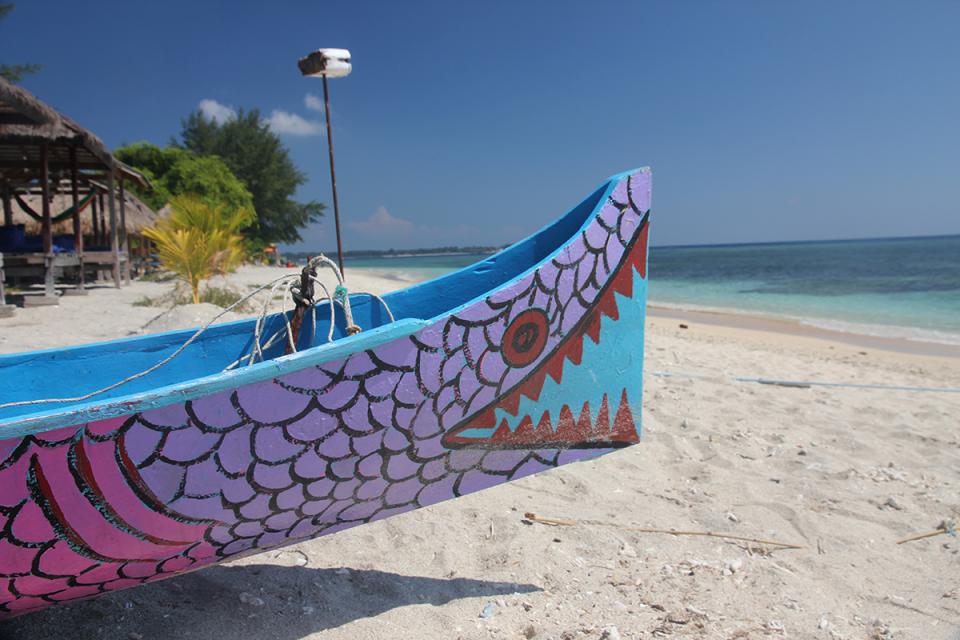
Relaxed beaches on Gili Air
Gili Trawangan is sometimes referred to as a “party island”, but I think that creates the wrong image as there are really no clubs or specific nightlife areas at all. It’s maybe better to say that it’s “an island where you can party”. Several bars take turns hosting parties throughout the week, but you can also stay on Gili T without joining the fray.
For a much more relaxing time, head to neighbouring Gili Meno or Gili Air. There aren’t as many people here and the slow pace will feel like a breath of fresh air. Anything you can do on Trawangan (scuba diving, snorkelling, yoga, bike rental, etc.) you can also do on Gili Air, just don’t look for a big night out.
Nusa Tenggara (Flores)
Flores is a relative newcomer to the backpacker trail, achieving popularity mainly thanks to the Komodo National Park.
Visiting this protected park gives you the opportunity to scuba dive some of the world’s most beautiful reefs, as well as to see the giant Komodo dragon lizards in the wild. Meeting these crocodile-sized lizards might not meet everyone’s high expectations (travel companions of mine complained they were only sunbathing and barely moved!), but I still think it’s not something to miss out on. Just hiking around the islands is worthwhile in itself, and seeing the Komodo dragons is an awesome bonus. Just try not to get eaten.
The launching pad for Komodo is the seaside town of Labuan Bajo (also referred to simply as Bajo). You can reach it either by boat from Lombok (a fun 3-day adventure) or by plane.
The most epic way of experiencing the Komodo Islands is as part of an island hopping tour. If a private tour is a bit out of your price range, you can often find similar trips locally that are more backpacker-style.
Flores gets increasingly remote as you go east. I loved exploring Flores by motorbike as all the kids from the villages will be excited to see a foreigner and come out to high-five you, and rice farmers will be waving at you all along the way.
There are some traditional villages you can visit on Flores, and the multi-colored volcano lakes of Kelimutu are worth a look as well. There are some tourist sights, but Flores is mostly about going somewhere relatively low-key and just enjoying the journey. It’s among my personal favorite bits of Indonesia.
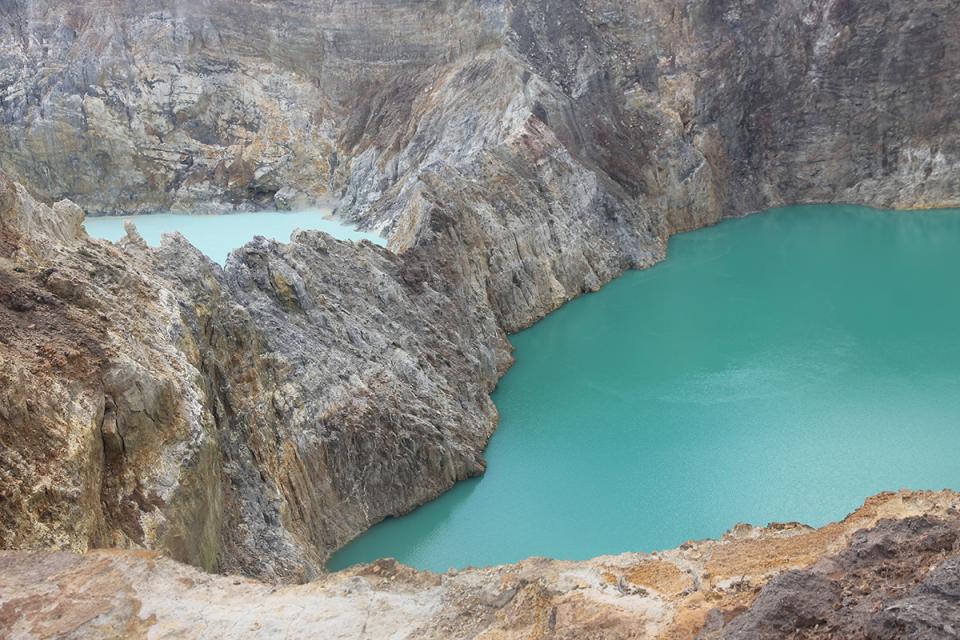
Sumatra
Sumatra is like the polar opposite of Bali. If you want somewhere adventurous and fun but also less-visited, then Sumatra might be just for you.
I’ve heard quite a few Boomer-age backpackers fondly reminisce about when Sumatra was one of the top backpacker destinations. Decades ago it was an essential part of the Banana Pancake Trail as overland travelers made their way down from Singapore through Sumatra, Java, and finally Bali. When visas were shortened from 60 to 30 days and budget airlines took off, backpackers began flying over Sumatra and skipping straight to Bali.
It’s only in recent years that it seems to be somewhat rediscovered again — and with good reason.
Sumatra is absolutely filled with primal rainforests, epic waterfalls, volcanic peaks, and giant lakes. The main city, Medan, is also just a 1,5 hr flight from Singapore and Kuala Lumpur, two major international hubs. This means that even though Sumatra is a bit off the beaten path, it’s still easily accessible.
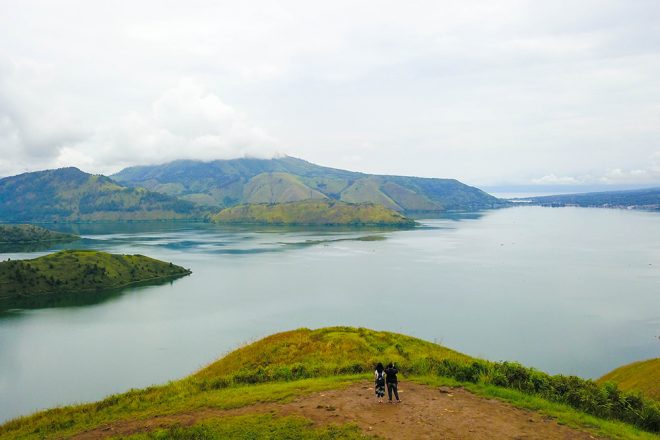
You’ll see only a trickle of Western tourists in Sumatra, but there is still a clearly identifiable backpacker trail. Most visit the region of North Sumatra while some make their way to West Sumatra as well.
You’ll likely start in Medan and then head to Bukit Lawang, an ecotourism hub where jungle treks give you a chance to see Orangutans in the wild. You can make an optional (very long) side-trip to the island called Pulau Weh, then go to Lake Toba, the world’s largest volcanic caldera lake and a chill place where many backpackers seem to stick around for a while.
Popular spots in West Sumatra include Bukittinggi, Harau Valley, Padang, Mt. Kerinci, and the Mentawai Islands.
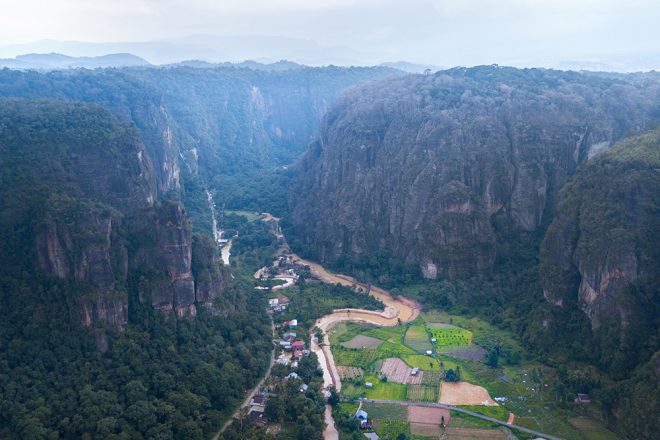
The southern regions don’t have as much going on though, so most backpackers head for Pedang and fly to Jakarta, Yogjakarta or Bali, avoiding an arduous overland journey.
Sumatra is arguably not where you should go for buzzing backpacker bars and super social hostels, but if you’re craving some true wilderness, unspoiled and adventure-filled places, then you’ll have come to the right place.
Kalimantan (Borneo)
In brief, let me mention a few more parts of Indonesia.
Borneo is home to vast stretches of untouched rainforest, although much of it is also disappearing because of palm oil production. Unlike what you might expect, there actually isn’t much tourism on the Indonesian side of Borneo, and if you do go you are likely to be very much alone. If you want to have Borneo on your itinerary, consider visiting the more easily accessible Malaysian side in the north (this is also what I did). The regions of Sabah and Sarawak have a ton to offer.
Raja Ampat (Papua)
I have not yet been, but Raja Ampat has achieved some notoriety as a travel destination in the far eastern edge of Indonesia. While much of Papua is remote and lacking tourist infrastructure, Raja Ampat is the exception as it is a well-established destination for scuba divers in particular.
Keep in mind that Raja Ampat is more expensive than other parts of Indonesia. It might not be the perfect place to go if you’re a shoestring backpacker. It’s mostly become known through upscale diving shops and some isolated resorts among the crystal clear waters. It’s also far away and hard to get to, but of course the amazing pictures don’t lie.
Sulawesi
Sulawesi is still very much on my travel list for Indonesia, so I can’t yet speak from experience here. It’s a less-known destination, much like Sumatra, so if you like your off the beaten path places then Sulawesi is worth a closer look. The main crowd going here seems to be scuba divers, who concentrate especially around Manado in the very north, but small numbers of independent travelers also make their way around Sulawesi. From Sulawesi, you can also make it to the off-the-radar Banda Islands.
Travel costs in Indonesia
Indonesia is cheap, but there are some exceptions. Southern Bali with its luxury hotels and resorts can be very pricey, as are (maybe counterintuitively) the most remote places like Papua.
While Indonesia used to be known as the region’s ultimate cheapie, it is now just a bit more expensive than mainland Southeast Asia. Note that various park entrance fees have been increased a lot in recent years—for more information, check out my Southeast Asia Cost of Travel Overview.
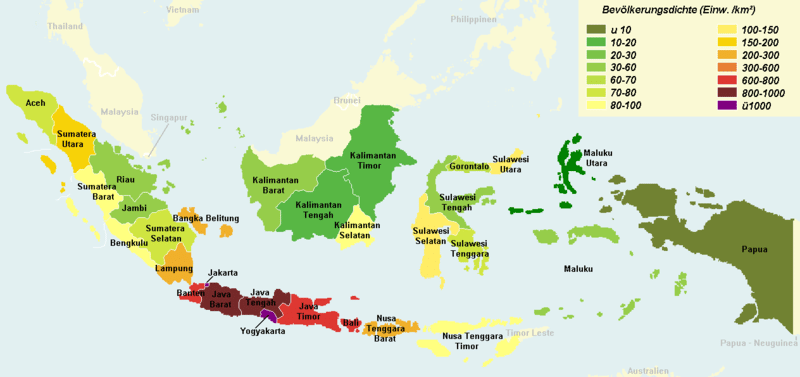
Above: population density in Indonesia. Java can be chaotic and busy, while there is seemingly barely anyone in Nusa Tenggara. I found this map helpful in visualizing what to expect.
Some links may be affiliate links, meaning I may earn commission from products or services I recommend. For more, see site policies.
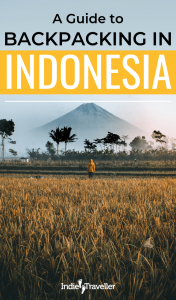
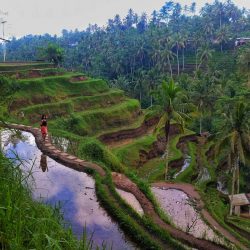
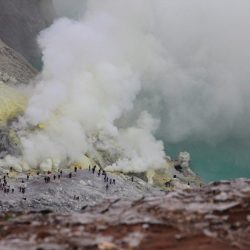
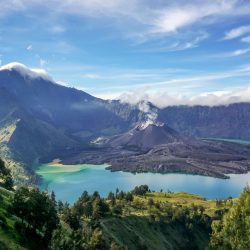
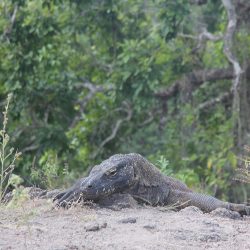




Your blog is wonderful!! You have been all over my country. I am from Flores and people call me Ms Komodo tour 🙂 Well some people. If you ever come back to Komodo, please look us up. we are a women owned local company that offer diving and Komodo tours. If you ever come back send us a message please. I love to show people around my local islands. Thank you! – J (Komodo tours) Our website is https://www.komodoislandtour.com/
Hi Marek! Found you through Pinterest…
Thanks for the great island guide to Indonesia (my home country!). I am from Medan so I love that you included Bukit Lawang AND wonderful Lake Toba.
My background is Batak and my family all come the Lake Toba area! Everyone should visit if they get a chance. 😉 Thanks!
Wow thank you for your blog. you created the best blog about my home island. I used to live In Bali, but I came home to help my local people of Flores Indonesia, so now I can help my local village get tourism and tell people around the world from online now. Thank you and hope you visit! thank you please. it is very beautiful here and I live to help my local people.
Hi…I think we met 3 year ago. So cool!
Have you ever travelled to Indonesia during rainy season?
I will be traveling southeast asia in November/ December, and somehow I really set my mind on Indonesia, but because of the climate I am not sure if it makes any sense and if it would be smarter to go to Vietnam instead.
Sorry not been there in rainy season
Hiya, I was wondering how you travelled from Yogyakarta to Mt. Bromo? Was it by bus or train? Thank you!!
I grabbed a 2-day tour by minivan as this was easiest at the time. Booked it locally in Yogyakarta…
Thank you! One more q if that’s okay… if I want to take the train from Jakarta go Yogyakarta is it advisable to book in advance or can I buy a ticket the day before?
Ps I have just bought your book – looking forward to the read!
Great post Marek! I am planning a trip for 2 weeks in August this year and would like to cover a lot of places mentioned in your blog…although am not sure I’ll be doing justice to myself, since I love both history and wildlife and would love to relax towards the end of the trip:)
I’ll follow you!
Thanks Supraja! You can definitely get a pretty great slice of Indonesia in two weeks. Good luck with planning your route! 🙂
This is a great intro to Indonesia. I recommend spending more time in Flores and Komodo National Park. So much to see and the scuba diving fantastic.
Great article, thank you for sharing. I completely fell in love with Sumatra, which is a bit off the beaten track. Not only Lake Toba and exploring the jungle of Gunung Leuser National Park is amazing, but island hopping at the Banyak-islands and Pulau Nias, which is like paradise on earth and has a lot of culture to offer. Pulau Weh is definitely one of the best dive spots in the world and the atmosphere is just so relaxing.
Had a lovely trip with Orang 2 Utan (www.orang2utan.com) which help organizing trips, collaborate with one of the most experienced guides, but also are just open for tips on accommodations and how to get around..
All in all Indonesia is a beautiful and very diverse country.
Hi, what town did you stay in near mount bromo in java?
To be honest, I can’t remember or find it on the map anymore. Sorry! 🙁
Hi marek , a great travel guide here . I’m heading for bali in march and … I have about 10 days to explore island of the gods, however I’m confused about my route itinerary. Can you please guide me on what cities and days to be spent there.. Im keeping 2 days for gili though
I would love to back pack! I only have up to 5 weeks end of july to august. Is it advisable/possible to travel this way with a child(8)?
I imagine it’ll be a bit different travelling with a child but at the same time I see no reason why not! I’ve met some backpackers travelling with children in these parts and they seemed to be enjoying themselves a lot 🙂
Hi ! i am presently 17 i would like to go on a one month trip in indonesia, i am wondering if there would be problem for renting scooters ( i have my canadian driver liscence ) and for renting hotels thanks !
I’m not sure about the age requirements for scooters. Companies tend to be pretty flexible with these things in Indonesia though…
No problem booking accommodation.
in Indonesia July 1st…..thanks for this!
Have a great trip!
Hi! Great post! I’m going to Indonesia for one month soon and still planning where to go. I thought I would start in Java and be there for around a week. Then I thought I would head to Bali, but haven’t decided how much time would I spend there and if I will go to Gili Islands&Lombok or to Flores. I really like places with no tourists but would like to meet some other backpackers as well. I’m not really into partying either. I would also like to do some activities and I would love to go scuba diving for the first time (or get a certificate for that?). I think I will fly to Jakarta and fly back home from Bali.
Do you have any tips on how to decide which islands would suite me best?
Hey Sofia. Great question! The Gili islands are quite party focused so maybe Lombok or Flores will give you more of what you want. These places are less popular than Bali or the Gilis, but you’re not going to be totally alone there either.
The reefs around the Gilis are fine for a first scuba diving experience but the USS Liberty wreck on Bali or the island of Nusa Lembongan are a bit more special. If you have 2 or 3 days (and some money) to spare I can highly recommend getting Open Water certified. Some dive shops offer ‘taster’ dives but these are pretty limited experiences.
Love this post! I am Indonesian but still have so many places to cover myself:)
I just came back from a month of backpacking in Java and Bali and I can say Indonesia is definitely one of the most beautiful destinations I have ever been too (and very cheap). Very good article!
Nice post, please post about Lombok too
thanks 😀
Thanks for the tips, I definitely want to get to Ijen Crater and Tana Toraja some time next year!
Very good article. I am an Indonesian myself but still struggling to complete one of my dreams: visit all Indonesian provinces before I get 25. In general, traveling is not Indonesian culture, except those like Minangkabau people form West Sumatra that migrate to most parts of Indonesia. Indonesia is really huge, with 260 millions people, 17,000 islands and culturally diverse (yet is not equally distributed) population. It has about 450 ethnic groups and 719 living languages. Javanese is the largest ethnic and L1, taking 42% of total population (btw, I am a Javanese too) but the national language is Indonesian, which is standardized form of Malay, whose ethnic only take 3% from national population. If you are Indonesian nor live here in Indonesia for long time, you could easily find that Indonesia is MUCH MORE than just Bali.
Just a small tips, learn Indonesian if you want to find better tourism information (especially for those outside Java and the Lesser Sunda Islands) in the net. With little (Indonesian) web-researching modals, I have visited many wonderful beaches, from white sand to pink-colored to rocky ones, from peaceful and quiet beach to the one that have huge surfing waves. I visit some traditional settlements inland, it is simply charming to see their way of live. There are some hidden natural paradise in the remotest place, such as waterfalls in Sumatra or snow-covered peaks in Papua! For the last, it is still on my wishlist. I never visited Maluku and Papua. Even before that, Indonesia is still TOO HUGE to be explored completely.
Anyway, I reside in Palembang, South Sumatra, so do not hesitate to contact me (masjawad99@gmail.com) if you need tourism or other activities information in the South Sumatra area (which include the provinces of South Sumatra, Jambi, Bengkulu, Bangka-Belitung, and Lampung). Very little tourism activity done here, yet it has many exciting places of interest (beaches of Lampung and Bangka-Belitung, inter-provincial UNESCO World Heritage site natural reserves, wetlands to watch bird migrations, to old archaeological sites (Muarojambi Temple Compuonds with about 20 temples!) and scattered Stone Age monuments. I have traveled the area since my childhood, but even after that, my wishlist still contains many places in this area.
Just wanted to say how helpful this was for me. i’m in Bali right now trying to decide if I spend my next week here or explore more. Thanks for all the info!
Has anyone ever visited in November? I know it is the wet season but I was wondering if tis till a good time to go or if I am better spending November in the Philippines? Any advice would really be appreciated.
Great article thanks, I’m heading to Indonesia on the 16th Oct so your advice is appreciated. I agree with the comment as to avoid Thailand in the wet season, because I’m here in Koh Lanta and it’s very, very quiet and very wet.
I have September and October to work with. To avoid bad weather I was considering starting in Indonesia for one month and then backpacking Thailand for one month. What do you think about that plan?
Yep that seems like a great plan, as you’ll avoid Thailand’s wettest month
Indonesia is a wonderful country full of good vibes and cultural treasures! It’s great that we have a possibility to share our experiences. I also wrote an article with my experiences and tips about Bali, would be glad to get your feedback: http://elysianmoment.com/indonesia/
Great page. Many thanks.
Is Indonesia a good start for going alone backpacking?
Yes it can be a good start. If you want to travel solo and also meet people, you could start on Bali where there are many other travellers.
im so ashamed read all comments, im indonesian and i never exploring my country, just stay at city and working…poor me…i hope i can join with one of traveler that will exploring my country
Awesome post, thanks for sharing!
Our favorite part of traveling Indonesia was crossing Flores, it still felt so untouched… a great way to do it is to fly into Maumere and hire a local to drive you one way to Labuanbajo and fly out from there.
Check out our blog for this and more tips: http://bonatravels.com/2013/08/11/country-summary-indonesia/
I loved Flores as well! Thanks for sharing that post